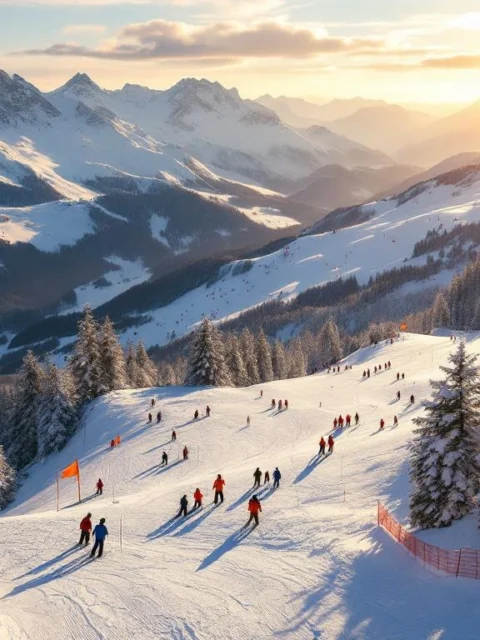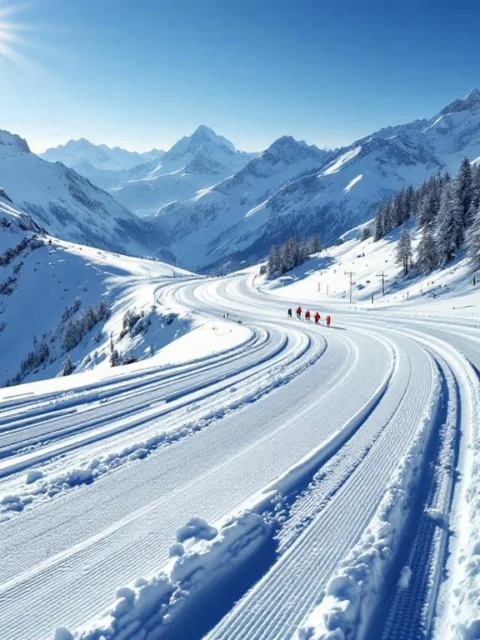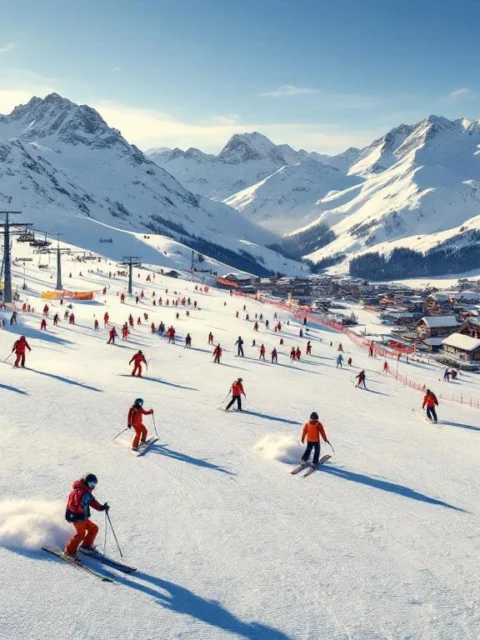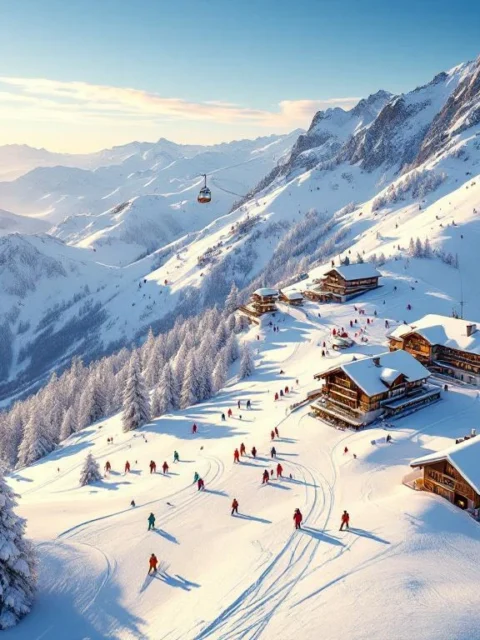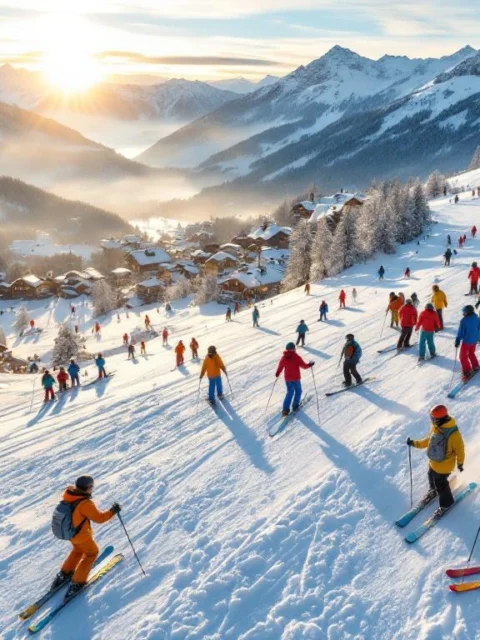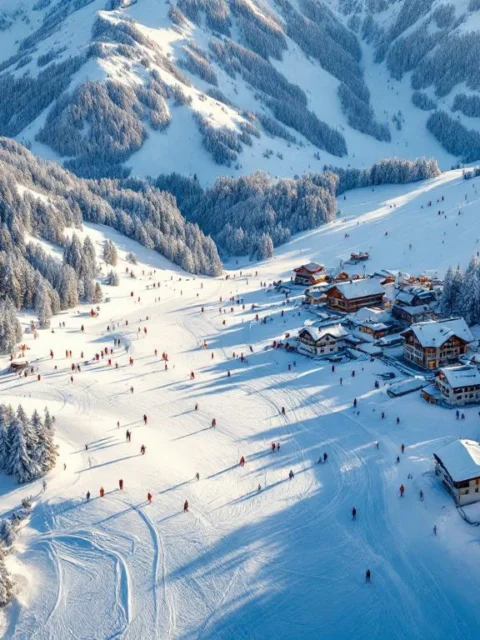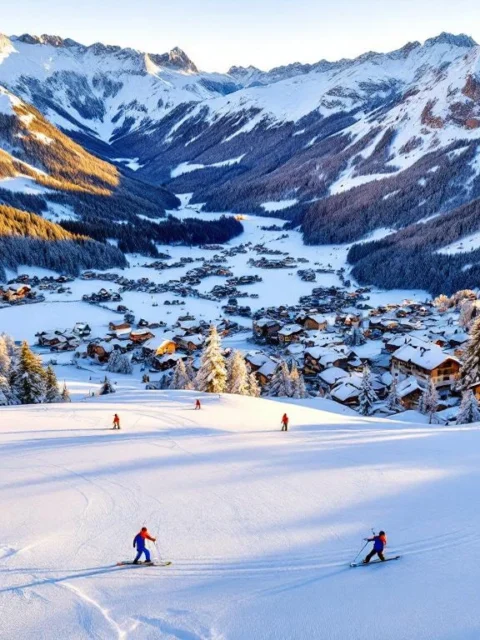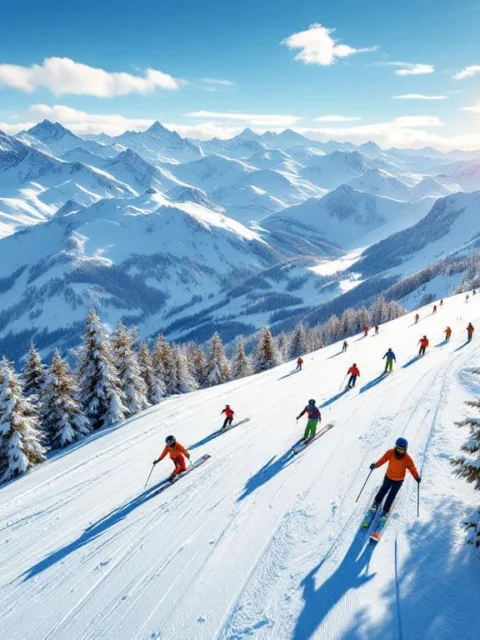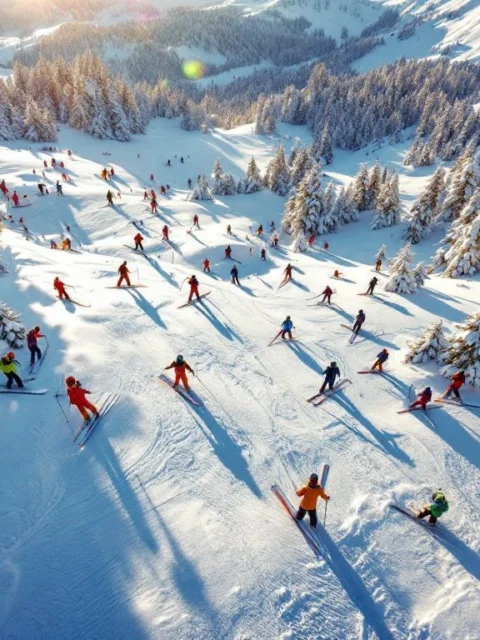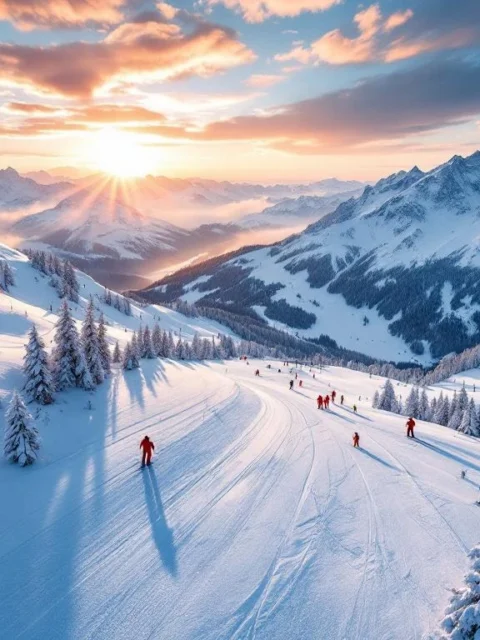What is the most snow-sure ski resort in France?
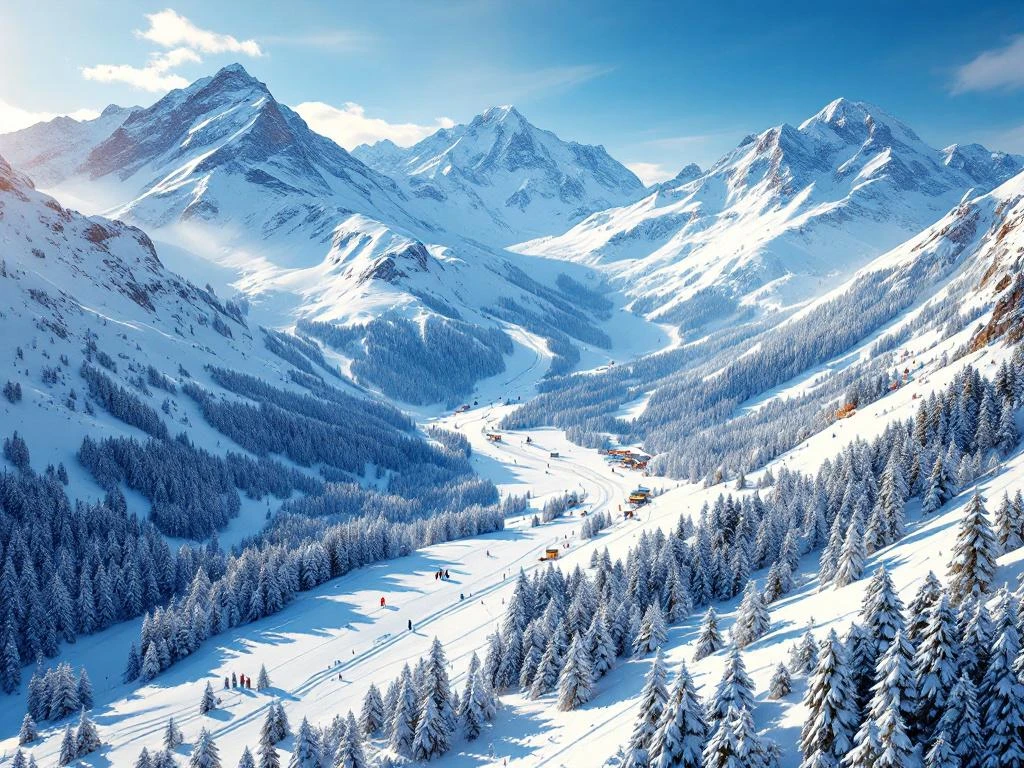
The most snow-sure ski area in France is Val Thorens, located at 2,300 meters altitude in Les Trois Vallées. This high-altitude resort offers the most reliable snow conditions of all French ski areas thanks to its exceptional elevation and northern exposure. From November to May, you can count on excellent slopes here, making Val Thorens the perfect choice for winter sports enthusiasts who don’t want to risk disappointing snow conditions.
The Search for Snow Reliability in French Ski Areas
As a powder-spotting, first-track hunting snow lover, you know that nothing is as disappointing as a ski vacation without snow. When choosing a snow-sure ski area in France, several crucial factors play a role that make the difference between a fantastic powder experience and a green slope.
Elevation above sea level is by far the most important factor for snow guarantee. Ski areas above 2,000 meters have significantly more chance of natural snowfall and retain it longer due to lower temperatures. The geographical location in the French Alps also determines how the mountains capture humid air masses and convert them into those beautiful white crystals we all love so much.
The climate in different parts of the French Alps varies greatly. The northern Alps generally receive more precipitation, while the southern Alps get more sunshine but less snowfall. This combination of factors means that some resorts offer reliable snow conditions year after year, while others depend on the weather of that specific season.
What Makes a Ski Area Snow-Sure?
The best ski area for snow guarantee is determined by five essential elements that together create that magical combination of natural and artificial snow that every skier dreams of.
Elevation above sea level is the absolute king of snow reliability. Ski areas above 2,000 meters elevation have temperatures that consistently stay below freezing, ensuring snow not only falls but also remains. For every 100 meters of elevation difference, the temperature drops by approximately 0.6 degrees Celsius.
North-facing slopes are worth their weight in gold for snow retention. These runs receive less direct sunlight, keeping the snow cold and powdery for longer. South-facing slopes can quickly turn into heavy, wet snow in the afternoon due to the sun’s warmth.
Glacier areas offer the ultimate snow guarantee because they are permanently covered with ice and snow. French ski areas like Tignes and Les Deux Alpes have access to glacier runs that make skiing possible even in summer.
Modern snowmaking facilities serve as backup for nature. These systems can cover a complete run within 24 hours when temperatures drop below -2 degrees Celsius, which is crucial for season opening and maintaining the slopes.
Which French Ski Areas Are Located Highest?
The high-altitude ski resorts in France form the elite of snow reliability, with runs that literally lie in the clouds and seasons that last months longer than their lower-altitude competitors.
| Ski Area | Highest Point | Village Altitude | Season Duration |
|---|---|---|---|
| Val Thorens | 3,230m | 2,300m | November – May |
| Tignes | 3,456m | 2,100m | October – May |
| Les Deux Alpes | 3,600m | 1,650m | December – April |
| Alpe d’Huez | 3,330m | 1,860m | December – April |
| La Plagne | 3,250m | 1,250-2,100m | December – April |
Val Thorens reigns as the highest ski resort in Europe, where you literally ski among the clouds. The village itself sits at 2,300 meters, meaning you have direct access to guaranteed snow from your hotel.
Tignes offers the longest ski season in France thanks to its glacier. Here you can even ski in summer on the Grande Motte glacier, an experience you can’t get anywhere else in the French Alps.
How Long Is the Ski Season in Snow-Sure French Resorts?
Skiing in France from December to May is possible in the most snow-sure resorts, with some even offering year-round skiing thanks to their exceptional altitude and glacier access.
Val Thorens traditionally opens at the end of November and doesn’t close until early May, representing an impressive season of nearly six months. The early opening is made possible by the combination of natural snowfall at high altitude and extensive snowmaking facilities.
Tignes has the longest season with skiing from October to May on the glacier, and sometimes even summer skiing in July and August. This makes it a favorite among professional skiers who want to extend their season.
Les Deux Alpes offers a solid season from December to April, with opportunities for glacier skiing in the summer months. The combination of high runs and glacier access ensures consistent snow conditions in French ski areas.
Lower resorts like Chamonix and Megève have shorter seasons from December to March, depending on that year’s snowfall. These resorts often compensate for their limited snow reliability with charm and authentic Alpine atmosphere.
Why Do Experienced Skiers Choose High-Altitude French Ski Areas?
Experienced winter sports enthusiasts know that snow-sure French Alps resorts not only offer a guarantee of snow, but also those perfect powder conditions where every first descent of the day becomes a religious experience.
Better snow quality is the main argument for high-altitude ski areas. The colder temperatures ensure that snow stays dry and powdery, instead of the heavy, wet snow you often find in lower areas. This dry powder gives you that magical floating sensation while skiing.
Longer seasons mean more flexibility in your vacation planning. You can take advantage of early season deals in December or late season sun in April, when the sun is warm but the snow is still perfect.
Less crowding early and late in the season is a major advantage. While lower resorts depend on the Christmas holidays and February break, you can enjoy empty slopes in November and May at high-altitude areas.
Reliable ski conditions eliminate the stress of weather forecasts. You know that your investment in a ski vacation is guaranteed to be rewarded with excellent slopes, regardless of what Mother Nature decides to do that week.
The Best Choice for Guaranteed Snow in France
For the ultimate ski area with lots of snow experience, we recommend Val Thorens as first choice, followed by Tignes for the longest season and Les Deux Alpes for glacier skiing. These three resorts form the holy trinity of French snow reliability.
When planning your ski vacation to these high-altitude gems, it’s smart to arrange your ski instruction and lessons in advance. Our platform connects you with more than 250 ski schools and instructors throughout the Alpine region, so you can find the perfect match for your level and preference.
For beginning skiers, we recommend choosing Val Thorens snow because of the excellent beginner facilities at altitude. Advanced skiers can enjoy themselves in Tignes ski area with its challenging off-piste opportunities and glacier runs.
Don’t forget that high-altitude ski areas have more intense UV radiation due to the thin air. Sunscreen and good sunglasses are essential, even on cloudy days. The combination of snow reflection and altitude can otherwise turn your vacation into a painful experience.
Plan your accommodation early, especially for the snow-sure resorts. These popular destinations sell out quickly, especially during peak periods when lower resorts may have insufficient snow.


